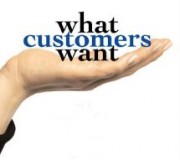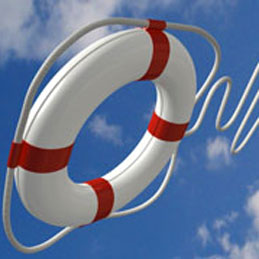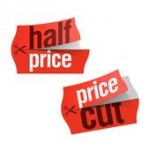 For those of you who are in the retail industry, you may have noticed a recent trend to clean up in-store environments – reduce shelf heights, remove dense ends and dump bins, widen aisles etc. – in order to increase comfort and make the shopping experience less stressful for customers.
For those of you who are in the retail industry, you may have noticed a recent trend to clean up in-store environments – reduce shelf heights, remove dense ends and dump bins, widen aisles etc. – in order to increase comfort and make the shopping experience less stressful for customers.
The big question then becomes “does clean make customers keen”? According to Walmart, arguably the largest and most successful retailer in the world, clean stores mean fewer beans (on the bottom line).
As reported in the New York Times, Walmart conducted a massive in-store experiment to improve sight-lines, rationalize the overall number of items offered, remove warehouse-like merchandising in centre aisles, and increase the width of core aisles. According to Walmart’s CEO William S. Simon, “(Customers) loved the experience. They just bought less.”
As a result, Walmart reverted back to its original strategy of offering more products, with tighter aisles, more clutter and lots of bargain bins in the hopes that customers would spend more because of a perception “there were bargains to be had”.
If you do a quick search on the internet, there are dozens of experts who subscribe to the view that a larger selection, more bargain bins, and sales signage equates to “better value”. In essence, the more you look like a market stall, the better it is to generate buzz and sales. They argue that if your merchandise is neatly presented on the walls and in well organized aisles, with no point of sale impulse offers and dense ends full of 2-for-1 specials, customers will tend to think your store is expensive (i.e. overpriced) and they will not buy from you.
And if you think about it, you can probably name a whole list of retailers who subscribe to this “clutter is good for business” philosophy and they seem to be successful. But how can we be sure that clutter makes customers keen? Have we been too quick and prematurely jumped to a conclusion that clean is a traffic and transaction turn-off?
Recent empirical evidence from neuroscience and neuromarketing sheds new light on how we think, and more importantly, how we make decisions. In fact, the decision making part of your brain responds strongly to certain stimuli only.
Did you know that your brain consumes 25% of your body’s energy? As a result, you brain wants to conserve energy so you tend to pay attention and be attracted to things that have sharp contrast, high visual appeal, strong emotional cues and a clear beginning vs. end message.
Now what does this mean for you in the context of your shopping environment?
A chaotic, cluttered store is cumbersome for your brain to navigate – you have to work hard mentally to hunt down and search for bargains. It may create some emotional appeal but it is likely perceived as having low contrast, low visual appeal and no clear beginning vs. end. According to neuromarketing studies, shopping in this environment takes time and energy and it also forces your brain to go into “thinking” mode. This is a critical point because thinking is counter-productive to deciding. Thinking takes place in one part of your brain (the neo-cortex), while deciding happens much more quickly (and automatically) in your old or “reptilian” brain.
So what does this neuromarketing research mean for the strategy and conclusions reached by Walmart?
Based on neuroscience, the strongest buying cue that you can give your customers is this – if your store (or business) has incredible bargains, people will buy (and even sift through a maze of clutter) because something is in it for them. The “what’s in it for me” (WIFM) principle is one of the strongest influences on the part of your brain that decides.
However, there is no hard evidence to suggest that clutter makes your customers keen.
Walmart and many others have come to a conclusion based on what they THINK people are doing to reach a buying decision in-store. However, neuromarketing has produced empirical evidence to support the opposite conclusion is more probable. Clutter and chaos create an environment where your customers have to think too hard, which is exhausting for the brain. They will do it if they have to, as long as the perceived bargains and value are very high.
Wouldn’t it make more sense to find another way to communicate good value and service without exhausting your customers and causing them to waste their time?
Wouldn’t you be more likely to get more sales and word of mouth referrals from your delighted customers?
In the end, Walmart may be correct about the fact people buy more in certain circumstances but they are wrong about WHY that is. The best way to create more excitement and sales is to make it easier for your customers to decide. You need to show them what’s in it for them, increase the contrast between your solution and your competitors and communicate a strong, clean visual message that compels them to say “YES”.
Is your business growth starting to plateau or stagnate?
It’s easy to sit back, take the foot off the accelerator and watch the sales roll in, especially if you’ve been satisfied with your recent performance. But keep in mind that if you slack off too much, your competitors will soon catch up and eventually put you out of business. At some point you may even find that you have stopped providing what your customers want.
Take a look around – businesses (and your competitors) are closing their doors due to the drop in consumer spending – which means MORE potential customers for businesses like YOU, that do survive. Today is the best time to take steps to revamp your marketing efforts and respond to the needs and the pain of your target market.
In these tough times, it’s going to take more than “thinking outside the box” and goodwill with existing customers to secure the survival of your business.
I want you to STOP right now and make a list of everything that you (and your competitors) do NOT do to make it easy for your prospects to buy from you. If you want to succeed over the long term, you will take a good hard look at both of these lists and find a way to do whatever it takes, for as long as it takes, to win your customers and keep them.
Granted, this is not an easy task. Most businesses will continue to do what they have always done – guess or assume what they think their customers need. However, no matter how challenging it is to ask the hard questions and re-engineer your strategy, I guarantee it will be a whole lot less painful and stressful than going under.
I had a married couple come to me once for advice and coaching – both the business they were in and their relationship were at the breaking point. The husband turned and said to me “I don’t understand it. I do everything humanly possible for my wife and she doesn’t appreciate me and I don’t think I can possibly do anything more to satisfy my customers – they are never happy and always want more. What can I possibly do?”
My answer to this age old dilemma applies to him, his marriage, and to you in your business right now. “Sounds like you are doing a lot. Too bad it’s everything BUT the very thing that your partner and customers need most.”
While this may sound harsh, I think you will agree that it is absolutely true. It does you no good to work harder doing everything…instead of focusing on the 1 thing that you customers actually need. Wouldn’t it be easier for you to work smarter, not harder, if you knew with absolute certainty what that 1 thing is?
How can you take the lesson from my client and apply it to your own business right now?
How could you go about figuring out what that 1 thing is?
I want you to do something really radical today and start asking both your prospects and existing customers what they need. You need to find out:
• What is the biggest challenge your prospects are facing in their business?
• When your customer thinks of the product or service you provide, what is THE most painful or difficult issue associated with acquiring it?
• What is the most important criteria to your purchaser when evaluating a company like you?
• What are some things that he/she thinks about or considers from a financial perspective when selecting that product/service or a vendor?
• What is the key strategic driver for you customer’s decision?
It doesn’t really matter what you have done up to this point or how hard you are working. There is no prize for volume or quantity. What counts is quality and relevance. You need to do determine what your customers want…and give it to them.
If you had to pick 1 thing – 1 strategy or change that you could implement in your business that would allow you thrive despite tough economic times, what would it be?
Let’s make a list of the top 5 things that I hear most business owners (like you) say when I ask them the same question…
- Spend money on marketing – attract new customers
- Have a sale
- Ask for referrals or help
- Tighten your belt – cut costs
- Do more networking
Now what do all of these have in common?
They all involve you doing more of the same thing that you have always done. None of these involve a radical shift in the way that you do business, do they? None of these involve you taking a step back and re-examining what you do and whether it’s actually working. And none of these involve you changing the way that you communicate what you do to your customers.
And that is precisely why none of them will work to recession proof your business.
So why is that important?
Because consumer sentiment and spending has changed dramatically in the past few years and those changes are being felt across every industry and by both big and small businesses. Everything you thought you knew about your customer and why she was buying from you has probably changed. And if you don’t take the time now to re-discover your prospect’s main source of pain – the reason why she needs your product or service – you risk losing more sales and more ground to your competition.
Now some of you are probably sitting there thinking “but MY industry is different. You may think that you’ve been hit especially hard and that everyone in your niche has lost sales. But that’s not the case for 99% of you. Even some of the most competitive and vulnerable industries have companies who have continued to perform well and who have even stole market share.
Just for a moment, I want you to cast your mind back to the first few months after the GFC. A lot of people lost their life savings during the stock market crash and many lost their jobs immediately after that. It was a horrific few months and few industries felt the wrath of the crash more so than the automotive sector. If you remember, new car sales dropped by almost 20% in a short period of time and stayed that way for almost a year. That’s a huge drop in an industry that is vital to the health of the national economy.
Now sales of new cars were down 20% for the industry. Despite the massive drop in sales, 1 manufacturer actually managed to gain market share and outperform all other companies in sales growth. Do you remember who that was and why?
Only 1 company stopped and took a good hard look at the pain their customers were in at the time. They didn’t do what all the others did – which was spend more money on newspaper ads, lay off salespeople and slash new car prices.
Only 1 company examined the change in the market, correctly diagnosed the pain of their prospects and came up with a solution. “If you lose your job and can’t make the payments, no problem – we will take it back free of charge”.
Do you remember who that was? That’s right Hyundai.
With one simple change to their focus and strategy they stole market share from every other manufacturer because they correctly identified the shift in their customer’s pain. They didn’t keep going on with the same old strategy and approach that clearly wasn’t working. Yes, there had been a major downturn and the whole industry was hit hard, but there were still lots of customers who wanted to buy a new car but were afraid to do so because they might lose their jobs.
So how can you apply this to your market right now? First and foremost, your customers are not thinking about you, your brand and your features and benefits – they are thinking about their own survival and whether or not you can cure their pain. If you are able to correctly diagnose the pain, you will trigger the part of their brain that makes decisions and you will stand apart from your competition. That’s the power of Sales Seduction.
Think about one of your customers right now and her pain? What do you need to do in order to get more clarity around that? What questions do you need to ask her about how it is affecting her financially, personally and strategically? To the extent you can diagnose her pain, get her to acknowledge it and put forward the solution that cures it, she will listen to anything that you have to say.
Take a look around you… businesses are closing their doors everyday – which means more potential customers for the businesses like you that DO survive. And in times like these, it’s going to take more than just doing more of what you have always done to recession proof your business. Uncertain times call for deliberate decisions and proven practices. In order to recession proof your business you need to shift your thinking around the way you do business and start providing THE solution to the #1 pain or challenge that your customers have. And if you need some diagnoistic questions and a step-by-step framework to help you do this…I highly recommend that you check out Chapter 8 of Sales Seduction.
14 Nov 2012
Can I Get a Discount?
Which question from your prospects and customers scares you the most?
If you are like most business owners we work with, you will probably answer:
- How much does it cost?
- Can I get a discount?
- Why should I choose you and not your competitor? or
- Can you provide a guarantee?
While all of these are intimidating and sometimes difficult to overcome, they all have one positive thing in common – your prospect is giving you a signal that she is interested in buying from you but she needs for you to help her overcome her objection. She has already started to think about trying your product/service but she is unsure about at least one aspect.
And for that reason – you can take those questions as a sign that a sale is in fact still possible.
However, the question that should frighten you more than any other because it is by far the worst one that you get from your audience is – Can I have some time to think about it?
Thinking is counter-productive to deciding. Whenever you put your prospect into a position where they have gone into the thinking part of their brain, you will not get a decision. Thinking takes place in one part of your brain (the neo-cortex), while deciding happens much more quickly (and automatically) in your old or “reptilian” brain.
Let’s examine where you went wrong…
The biggest part of your brain is the neo cortex. It is the last thing that forms in the womb and it lights up when we listen to music, look at colours, speak, read and process numbers. If you ever hear people talking about right vs. left brain thinking, they are talking about the neo cortex. In a nutshell – this part of your brain THINKS.
So when your customer says “I need to think about it” this part of the brain is firing up and looking for data. Neuromarketing research has revealed that this uses up tons of her brain energy and prolongs the decision making process. So, if you want to drag out the process of getting your customer to decide or compete on price, you want to make sure that your customer has to us this part of her brain. Make sure you give your customer lots of BIG words, numbers, graphs, lists of features and benefits, talk about your competitors and how you stack up next to them – and your customer will NOT decide <that is guaranteed> buts he will do a whole lot of thinking and take up more of your valuable time and energy in the process.
If you want to get your customer to decide, you must tailor and deliver your message to her old (reptilian brain). It lights up even before she has conscious awareness that she has made a decision. Now, while it is very true that this is the most primitive part of her brain, the good news is that it is very predictable. By understanding how this part of the brain works, you will never again bore and overwhelm your customers AND you will never again be lured into the trap of having your audience tell you that they need to think about it.
How will you do this? By understanding how this part of your customer’s brain works, you can help her to use the least amount of mental energy in processing your message which means that she will make quicker decisions. It is important to remember that unlike the neo-cortex (the thinking part of her brain), this part right of her brain is automatic – it does not think, it only DECIDES and ACTS. It is always at work scanning her environment looking for information of value to her survival. In order to avoid having your customers ask for time out to think about whether they need your product/service, you need to grab their attention up front quickly, deliver your strongest claim first and show her how your solution is going to solve her primary source of pain. This is the essence of Step 1 in the Sales Seduction process.
 I got a 15 page sales letter the other day from a marketing coach trying to convince me to attend his seminar. It was the perfect example of what NOT to do. If you want to attract more clients and make it easier for them to say “Yes” to working with you, you will want to pay particular attention to what I am about to share with you right now.
I got a 15 page sales letter the other day from a marketing coach trying to convince me to attend his seminar. It was the perfect example of what NOT to do. If you want to attract more clients and make it easier for them to say “Yes” to working with you, you will want to pay particular attention to what I am about to share with you right now.
You may not know this but there are reportedly over 14,000 sales and marketing books on Amazon – and most of them (like the email from this coach) deal with techniques and strategies that cause your prospects to waste valuable time and energy thinking. Without realizing it, these techniques cause your audience to have to use their neo cortex (the thinking part of their brain) to process what you are saying.
While some of these techniques may work for some of the people some of the time, they are not reliable or predictable because they are designed to trigger the wrong part (the thinking part) of your prospect’s brain.
So, what do top sales and marketing coaches do to help their audience to decide quickly?
Clearly there are some principles that work – there is a process to marketing and selling products and services effectively. However, some of these principles (while valuable) have been taken to the extreme by many experts and coaches. In doing so, they dilute your message and make it ineffective. Without realizing it, these strategies will kill your ability to close sales because they will make it difficult for your audience to decide anything.
For example, I’m sure you have heard of the concept of “social proof”. This was first proposed by Dr. Robert Cialdini and it essentially means that before people decide, they will often look to what other people do before making their decision. It explains why customers will choose to go to a restaurant that is full and has a line up outside ,when the one next door is almost empty and there are plenty of tables available.
According to Cialdini, you will assume that the busy restaurant must be better because others have decided to eat there. Social proof is an important driver and on some level, it does help your brain to make decisions more quickly. Your customer wants to find a solution to her pain but she is also afraid of taking a risk. Social proof is one factor that can help to swing the balance in favour of your product or service.
However, too often this principle is taken to the extreme. Take my example of the marketing coach who sent me a ridiculously long sales letter. 5 out of 15 pages were designed to show you how many people have used and love his products. Does this seem like a bit much to you? Is it possible that his long winded letter (while paved with good intentions to provide social proof), might have had the undesired effect of causing the audience to engage the thinking part of their brains… and ask for more time to “think about it”?
Social proof is a great tool in your marketing belt but it is not as effective as understanding the 7 Stimuli that trigger the decision making part of your customer’s brain. Knowing these 7 simple and effective triggers, can transform how you talk to your customers and the results you achieve. And the 7 Stimuli which trigger the part of the brain that decides, are part of my simple, step-by-step process called Sales Seduction. Sales Seduction, is based on neuromarketing principles, and it can help you go from confusing your prospects, to convincing them.
















